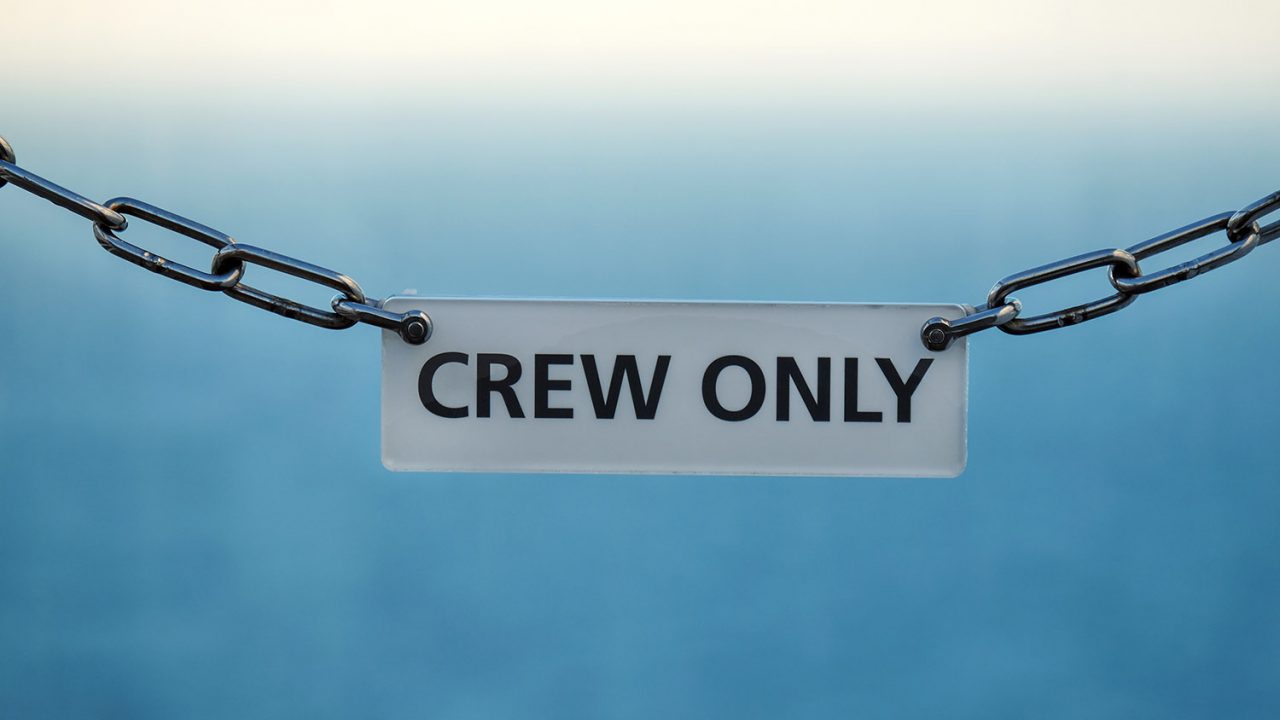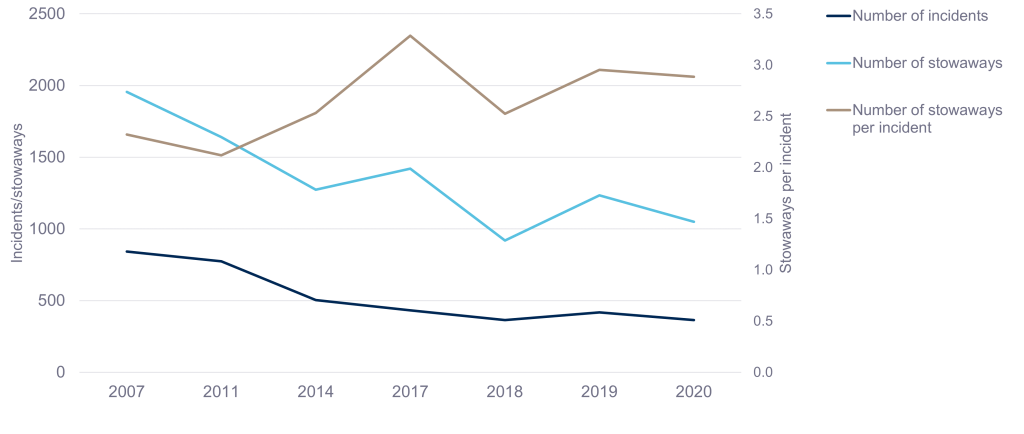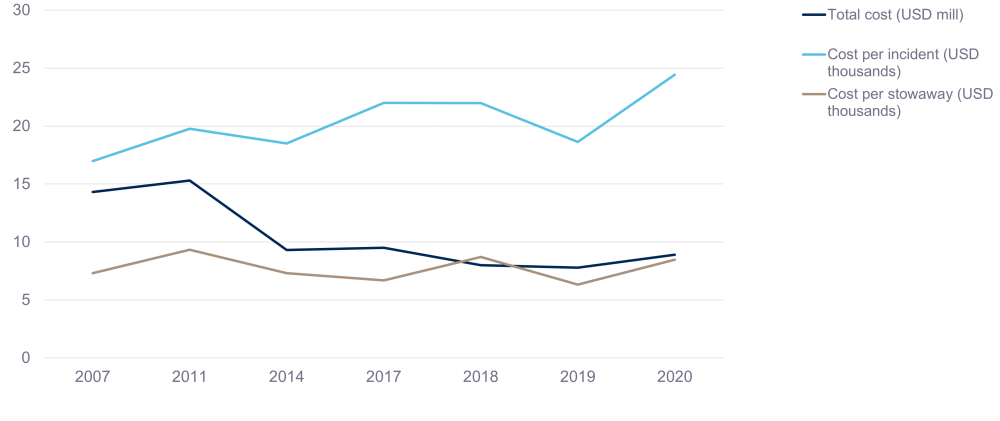Posted on: 29 June 2023
Gard has recently published an updated comprehensive guide on stowaways outlining the problem, the applicable regulations, assessing the risk of stowaways, prevention at port and humane handling of stowaways found on board. In preparation of the guide, we reviewed the trends over the last several years and share our observations.
Incident trends and regional hot spots
The International Group of P&I Clubs (IGP&I) carries out regular data collection exercises in respect of stowaways. Based on claims experience within all the member clubs, locations where stowaways are a common problem are identified along with the nationalities of persons stowing away and the average cost of stowaway incidents.
While the IGP&I data collection is primarily meant to compliment the stowaway cases reported to the IMO in its Global Integrated Shipping System (GISIS), it is worth noting that the number of incidents recorded by the IGP&I is generally higher than the those submitted via the IMO-system. However, even if the IMO GISIS data are more moderate in terms of the total number of incidents and stowaways, some of the observed trends concerning regional ‘hot spots’ for stowaway, as well as stowaways’ nationalities are very similar to those identified in the IGP&I data.
The IGP&I and IMO GISIS data for the period 2013 to 2022 show the following trends:
Overall incident trends (Source IGP&I)
Number of incidents and stowaways
Cost of incidents and stowaways
- The number of stowaway incidents has more than halved since IGP&Is carried out its first data collection exercise for the 2007/8 policy year but has remained fairly level over the past five years.
- The total number of stowaways involved has also decreased, but not at the same rate as the incident figures. This means that the number of stowaways per incident has been growing, and the data would seem to suggest that the current average is close to three stowaways per incident.
- Whilst the total cost net of deductible including fines imposed by states on shipowners, has dropped, the cost per stowaway incident, as well as per stowaway, has risen. It is also important to note that the cost to shipowners is higher than that incurred by the Clubs as, in addition to their deductible, shipowners are likely to incur other costs, which are not insured
Regional hotspots, by region of embarkation (Source IMO GISIS)
- Ports on the African continent continued to be the main hot spots for stowaway embarkations, even if the overall number of incidents reported from ports in Africa have decreased.
- European ports started to feature in the statistics in 2017 and the number of incidents reported from the European continent has remained high thereafter.
Continue to read here, alternatively the Guidance to Stowaways is available both in a downloadable PDF version and online version.







